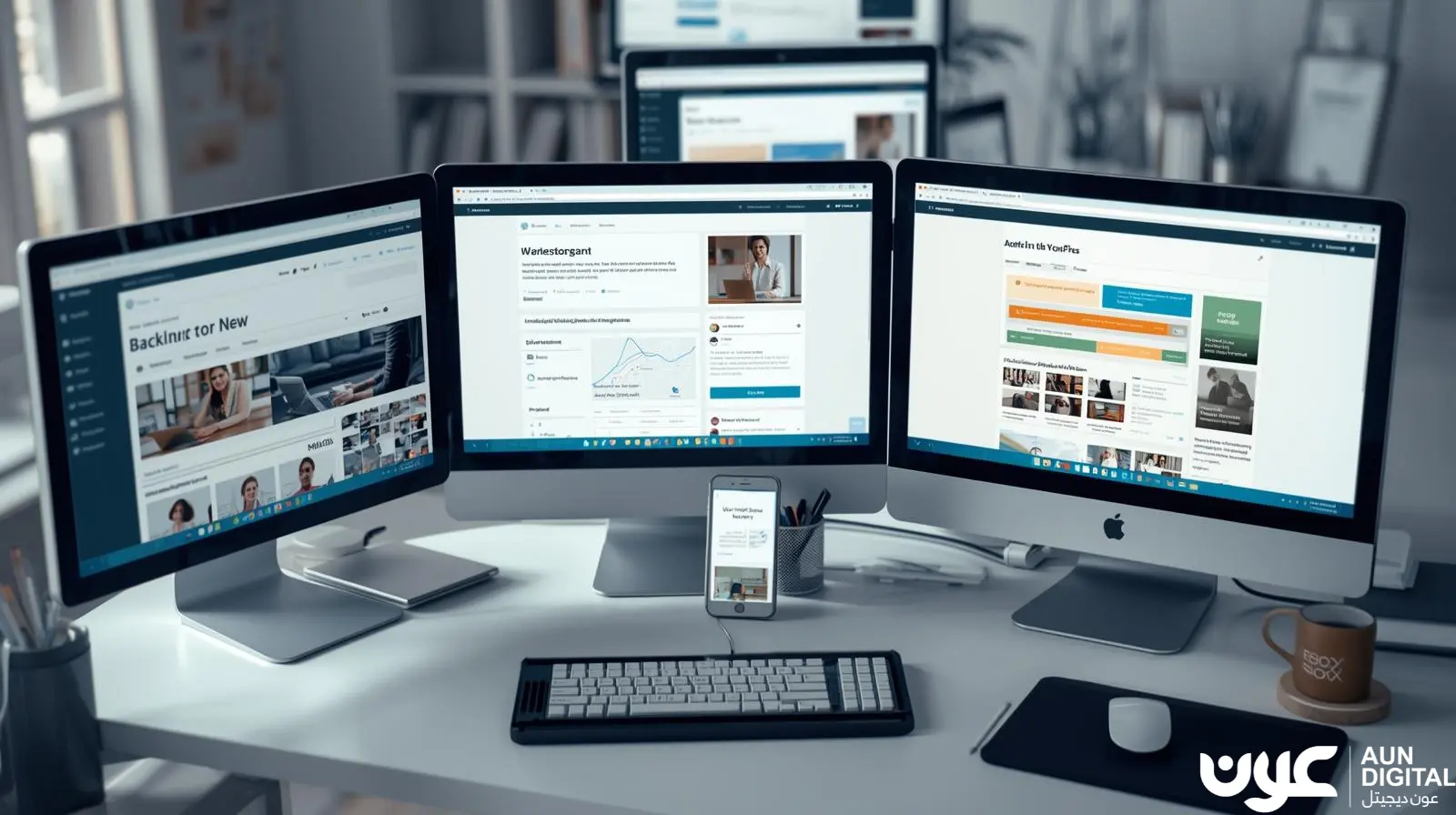Imagine you’re sitting in your apartment, scrolling through your phone. You click a website link, and suddenly, your coffee table is showing a 3D hologram of the latest sneakers, right in your living room. You didn’t download an app. You didn’t open anything fancy. It happened through your browser.
That’s not fiction. That’s web-based AR in 2025.
Augmented reality in web browsers is turning everyday websites into interactive experiences. It’s helping brands sell more, educate better, and connect with audiences in a way that feels real.
Whether you’re a business owner, marketer, or web designer, this shift isn’t something to overlook. It’s a direct response to what users want: faster, easier, more meaningful digital interaction.
In this blog, we’ll look at how AR in web browsers is changing the digital experience, where it’s heading, and how your business can be part of it, without building an app.
What Is Web-Based Augmented Reality (WebAR)?
Web-based augmented reality (WebAR) is a technology that brings 3D objects, animations, and interactive experiences directly into your environment using just a web browser. Users don’t need to download a separate app. Instead, the AR experience loads instantly from a website link, making it easier and faster to access.
In 2025, WebAR works seamlessly on modern mobile browsers like Chrome, Safari, and Firefox, using standards like WebXR, WebGL, and JavaScript frameworks such as Three.js or A-Frame. These tools allow developers and web design companies to build AR experiences that feel immersive without sacrificing speed or usability.
Unlike traditional AR apps, browser-based augmented reality is lighter, easier to share, and far more accessible. It has made its way into e-commerce, healthcare, education, and even tourism websites, all without making users install anything extra.
WebAR vs App-Based AR: Which Works Better in 2025?
Apps still have their place. Some AR applications require heavy graphics, offline support, or real-time tracking, which native apps handle better. But for most businesses in 2025, web-based AR is the smarter option.
Here’s why:
- Faster access: No app store, no waiting. Users open the link and interact instantly.
- Lower costs: No need to build separate apps for iOS and Android.
- Wider reach: Works across devices and browsers with one URL.
- Easy sharing: Just send a link or add a QR code.
For campaigns, product previews, or interactive marketing experiences, augmented reality in web browsers offers enough functionality without the hassle. It’s a big win for businesses who want to make their websites more engaging without increasing complexity.
Why Web-Based AR Is Gaining Momentum in 2025?
Web-based augmented reality isn’t just a buzzword anymore, and it’s quickly becoming a standard part of how people interact online. In 2025, more businesses are integrating AR in web browsers because it meets both user expectations and business goals.
Here’s why WebAR is gaining serious traction:
i. Faster Internet Speeds and Widespread 5G Access
With 5G and fiber-optic internet becoming more common, especially in tech-forward regions like the UAE, augmented reality content loads much faster and performs smoothly. This means users can interact with browser-based augmented reality without frustrating delays or buffering.
ii. Improved Browser and Device Support
Modern browsers like Chrome, Safari, and Firefox now support WebXR, giving developers direct access to camera and motion data. Combined with better mobile device cameras and processors, AR in web browsers feels more stable and immersive than ever.
iii. Changing User Behavior
People are increasingly unwilling to download new apps just to preview a product or explore a virtual feature. They want instant access, and augmented reality on the web delivers exactly that.
iv. Cost-Effective Development
Developing AR experiences for a website is usually more affordable than creating and maintaining separate mobile apps for Android and iOS. This makes WebAR especially appealing for small to mid-sized businesses that want to offer innovation without big tech budgets.
v. Marketing and Sales Integration
AR in web browsers fits perfectly into digital campaigns. Brands can run interactive experiences directly from social media ads, email newsletters, or QR codes, driving traffic to a single AR-enabled landing page without any extra steps. This has made augmented reality for the web a powerful tool for marketing teams.
vi. Website Analytics and Data Tracking
Since WebAR is integrated into the website, tracking user behavior is easier. Businesses can analyze how long users engage with the AR, what they interact with, and how it affects conversions, providing valuable insights without needing third-party analytics tools.
vii. Easier Access for Developers and Designers
With libraries like A-Frame, Three.js, and 8thWall, more web design services now offer AR features without requiring in-depth AR expertise. A skilled web design company can build custom, interactive experiences that run smoothly on most browsers.
How Augmented Reality for the Web is Making an Impact by Reshaping Industries?
From shopping to education, architecture to tourism, browser-based augmented reality is changing how people interact with brands and services online.
Here’s a closer look at how different sectors are using WebAR to create more meaningful, efficient, and memorable digital experiences.
i. Retail & eCommerce
With WebAR, shoppers can try on shoes, glasses, or see how furniture fits into their rooms, right from their browsers. This practical preview builds trust and often leads to higher sales while reducing return rates.
ii. Education & Learning
Students can now interact with 3D models of planets, human organs, or historical events, all from their school website. Augmented reality in web browsers brings static lessons to life and supports more engaging remote learning.
iii. Real Estate & Architecture
Virtual walkthroughs are now just a click away. Buyers can tour properties, explore floor plans, and view architectural designs through their browsers without needing an app. It saves time and makes presentations much more interactive.
iv. Healthcare
Doctors use AR in web browsers to visually explain medical procedures and conditions. Medical educators rely on WebAR to give students 3D anatomy experiences that are easier to access than traditional lab equipment.
v. Events & Marketing
Brands are using WebAR to turn static brochures and posters into interactive experiences. Whether at trade shows or product launches, a simple QR code can open a browser-based AR demo that keeps audiences engaged.
vi. Tourism
Tourism boards and museums are using browser-based augmented reality to create guided tours that overlay 3D stories, artifacts, or reconstructions at real-world locations. All a visitor needs is their phone and a browser.
How Web Design Companies Are Making WebAR Possible?
Behind every good WebAR experience is a well-built website. In 2025, many brands will rely on experienced web design company to integrate augmented reality into their websites without affecting speed or usability.
These teams use lightweight 3D models, efficient coding, and proper placement of AR triggers. They make sure the AR experience loads quickly, fits different screen sizes, and doesn’t slow down the rest of the site.
For businesses looking to add WebAR, a reliable web design service ensures:
- Mobile-first design that works across devices
- Smooth integration without app downloads
- Proper analytics and tracking setup
- Fast loading times and fallback options if AR isn’t supported
Whether you need a product demo, educational experience, or virtual tour, your website’s structure needs to support it.
Business Benefits of Using AR on the Web
As WebAR becomes more widely adopted, it’s no longer just about offering something new; it’s about creating better results. Let’s look at how businesses are using augmented reality in web browsers to drive real growth and value.
i. Higher Engagement on Your Website
Interactive AR elements keep users on your site longer. When customers can rotate, zoom, or preview products in their own environment, they’re more involved and more likely to convert.
ii. Boost in Conversion Rates
One of the biggest strengths of augmented reality on the web is its ability to reduce purchase hesitation. Shoppers can try before they buy, leading to better buying decisions, increased trust, and fewer returns.
iii. Stronger Brand Recall
Experiences that involve interaction are far more memorable than static content. When someone sees your product come to life through browser-based augmented reality, they’re more likely to remember your brand and return.
iv. SEO and On-Site Performance Benefits
AR in web browsers increases time-on-site and reduces bounce rates, two key ranking factors for Google. More user interaction also encourages link sharing and improves session duration metrics.
v. Easier Sharing and Distribution
WebAR doesn’t need an app, which makes it easy to share via email, social posts, or QR codes. Whether it’s part of a campaign or embedded in your product page, users can open the experience instantly.
vi. Cross-Platform Cost Savings
Instead of building separate apps for iOS and Android, businesses can use a single AR-enabled web page that works across all modern browsers. This means lower development and maintenance costs.
vii. Sales Enablement Through Visualizsation
Web-based augmented reality lets businesses present complex products in a simpler, more visual way. From custom car models to 3D floor plans, AR can guide users along a purchase path more effectively than traditional content.
Technical Needs and Challenges in 2025
Even though WebAR has become more accessible, delivering a seamless experience still requires careful technical planning. Here are some of the key factors to consider:
Modern Browsers and Devices
Web-based AR depends on updated mobile browsers and devices with camera and motion sensor access. Users with outdated hardware or software may experience limitations or not be able to access AR features at all.
Performance optimization
AR content needs to load fast and run smoothly. If 3D models or animations are too heavy, users will face lag, crashes, or long loading times. Compressing assets and using efficient frameworks are essential.
- Cross-browser compatibility: Different browsers support WebAR features in slightly different ways. Chrome, Safari, and Firefox all have unique quirks. Thorough testing across platforms is necessary to ensure a consistent experience.
- Lighting and camera permissions: WebAR relies heavily on device cameras and good lighting. If a user denies camera access or is in a poorly lit space, the AR might not display correctly. Prompting clearly and offering tips can help users engage properly.
- Fallback visuals: Some users may not allow camera access, or may be using unsupported browsers. Offering alternative images, videos, or interactive sliders ensures they still get value from your site.
- Privacy and trust concerns: Requesting camera permissions through a browser can make some users uneasy. It’s important to explain why the permission is needed and reassure users that their data isn’t being stored or tracked unnecessarily.
What Does the Future Hold for Web-Based AR?
Looking ahead, WebAR is expected to become more personal and intelligent. New use cases will emerge, especially when combined with AI. Imagine websites that show custom AR product demos based on user preferences, or virtual collaboration tools right in your browser.
As more brands adopt it, AR on the web will become as standard as video is today. Businesses that start now will have a stronger presence and more engaged users by the time competitors catch up.
How to Get Started with WebAR for Your Business?
You don’t need a massive budget to start. Begin with a single product preview or AR-enhanced landing page. Work with a web design company that understands mobile UX and browser compatibility. Test your AR experience and gather feedback. Then build more once it’s working.
It’s also smart to connect AR to marketing campaigns through QR codes, email links, or social media.
Wrapping Up!
Augmented reality in web browsers isn’t just a feature anymore; it’s becoming a standard expectation. In 2025, users don’t want delays, downloads, or extra steps. They want to interact instantly. And businesses that offer that convenience are the ones making a stronger digital impact.
Web-based AR makes this possible without the heavy costs or technical barriers of traditional AR apps. It works across devices, loads in seconds, and adds real depth to how people engage with your website.
If your competitors are still relying on flat pages, this is your chance to stand out. Whether you’re in retail, real estate, education, or travel, bringing augmented reality to your website can turn casual visitors into engaged customers.
And you don’t need to start from scratch. A smart idea, paired with the right web design service, is all it takes to bring your site to life.
FAQs (Frequently Asked Questions)
Q1. What is browser-based augmented reality?
It’s AR that works directly in your mobile or desktop browser, without downloading any app.
Q2. Can I use AR on a website without an app?
Yes. WebAR lets users access AR through a normal website link.
Q3. What are some real examples of augmented reality in web browsers?
Brands like IKEA, Gucci, and Warby Parker use WebAR for try-ons and demos.
Q4. Is WebAR better than app-based AR?
It depends. For fast, lightweight experiences, WebAR is more accessible. Apps are better for advanced AR features.
Q5. Do I need a web design company to add WebAR?
Working with a professional web design company ensures smooth integration, fast performance, and a good user experience.
Q6. Is WebAR supported on all devices?
Most modern smartphones support WebAR. Some older phones or browsers may not work perfectly.











